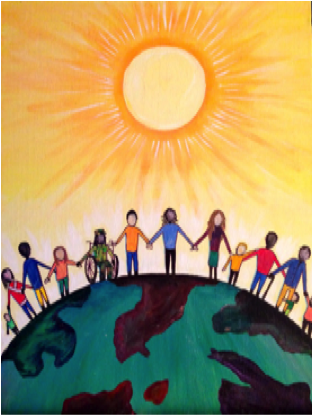PTSD: What You Should Know
The Scope of PTSD
According to World Health Organization surveys, the cross-national lifetime prevalence of Post-Traumatic Stress Disorder (PTSD) is 3.9% and 5.6% among the trauma-exposed. We know that many people worldwide have been exposed to trauma. For example, Save the Children reported that “globally, 426 million children live in conflict zones.” It is also estimated that about 354 million adult war survivors have PTSD and Major Depression (MD). This statistic was identified before the onset of the conflict in Ukraine.
Furthermore, extreme weather events and natural disasters have been previously linked to a broad range of adverse mental health outcomes. The most commonly reported mental health disorders in the aftermath of extreme weather events and natural disasters are PTSD, depression, anxiety, suicide, and substance abuse disorders (Cianconi et al., 2020). We also know that certain communities are particularly affected. For example, the estimated prevalence of PTSD tends to be higher among LGBTQ individuals, with rates ranging from 1.3% to 47.6% among LGB and 17.8% to 42% among transgender and gender diverse (TGD) individuals.
The Complexity
As we consider the numbers of individuals affected worldwide by traumatic stress reactions, we need to keep in mind that traumatic stress reactions do not occur in just one way. We know that trauma affects individuals biologically. We also know that symptoms of traumatic stress can occur immediately following a traumatic event, or it may be months or years before symptoms appear. Symptoms can wax and wane, plague people their entire lives, or appear suddenly. To further complicate things, about one of every two people diagnosed with PTSD also suffer symptoms of depression (Rytwinski et al. 2014).
We also need to recognize that the sheer number of individuals who have experienced trauma would make it difficult, if not impossible, to train enough primary care providers worldwide to make a significant impact. We need more portals within the public health system to address the needs of those who have trauma-related symptoms. Moreover, these portals must be accessible, adaptable, and affordable.
How TRI Helps
As we recognize the scope of the problem, innovative approaches to address the impact of post-traumatic stress and accompanying mental health conditions are imperative. TRI is known internationally for its innovative perspectives in promoting individual and community well-being. We have developed two types of trainings, the Trauma Resiliency Model (TRM)® and the Community Resiliency Model (CRM)®.
These models address the two major concerns outlined above. First, both models are biologically-based and teach wellness skills, cultivating well-being in mind, body, and spirit. In this way, TRM and CRM address the biological nature of stress reactions often seen as symptoms of PTSD. Second, while TRM is oriented toward mental health professionals, CRM takes on a public health focus and has been taught to professionals and natural leaders of communities. As we noted above, not everyone has access to mental health professionals. CRM can be delivered by the natural leaders of communities (ministers, teachers, first responders, and more) as well as mental health therapists and medical practitioners, increasing access to wellness skills that have been consistently found to improve well-being and resiliency, while reducing secondary traumatic stress and physical symptoms as well as depressive symptoms.
There is hope. “When we bring awareness to the inner wisdom of our bodies, well-being can grow. Even in times of great suffering, moments of gratitude can be seen and sensed.” – Elaine Miller-Karas

